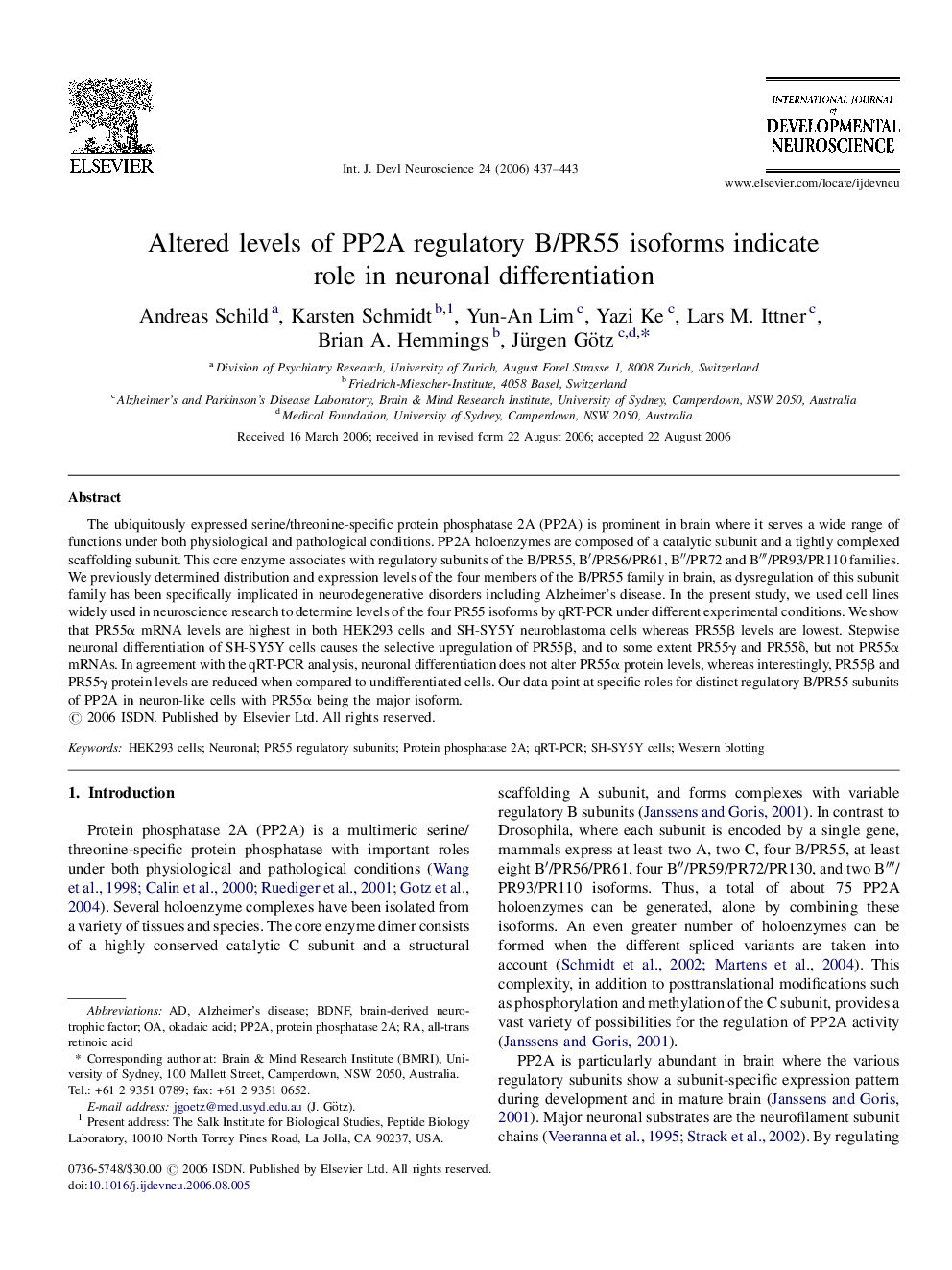| Article ID | Journal | Published Year | Pages | File Type |
|---|---|---|---|---|
| 2786921 | International Journal of Developmental Neuroscience | 2006 | 7 Pages |
The ubiquitously expressed serine/threonine-specific protein phosphatase 2A (PP2A) is prominent in brain where it serves a wide range of functions under both physiological and pathological conditions. PP2A holoenzymes are composed of a catalytic subunit and a tightly complexed scaffolding subunit. This core enzyme associates with regulatory subunits of the B/PR55, B′/PR56/PR61, B″/PR72 and B‴/PR93/PR110 families. We previously determined distribution and expression levels of the four members of the B/PR55 family in brain, as dysregulation of this subunit family has been specifically implicated in neurodegenerative disorders including Alzheimer's disease. In the present study, we used cell lines widely used in neuroscience research to determine levels of the four PR55 isoforms by qRT-PCR under different experimental conditions. We show that PR55α mRNA levels are highest in both HEK293 cells and SH-SY5Y neuroblastoma cells whereas PR55β levels are lowest. Stepwise neuronal differentiation of SH-SY5Y cells causes the selective upregulation of PR55β, and to some extent PR55γ and PR55δ, but not PR55α mRNAs. In agreement with the qRT-PCR analysis, neuronal differentiation does not alter PR55α protein levels, whereas interestingly, PR55β and PR55γ protein levels are reduced when compared to undifferentiated cells. Our data point at specific roles for distinct regulatory B/PR55 subunits of PP2A in neuron-like cells with PR55α being the major isoform.
